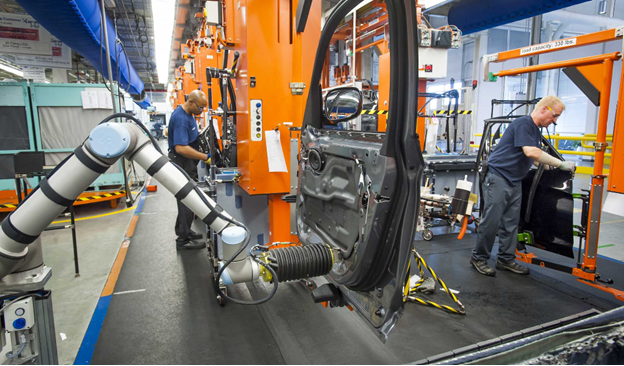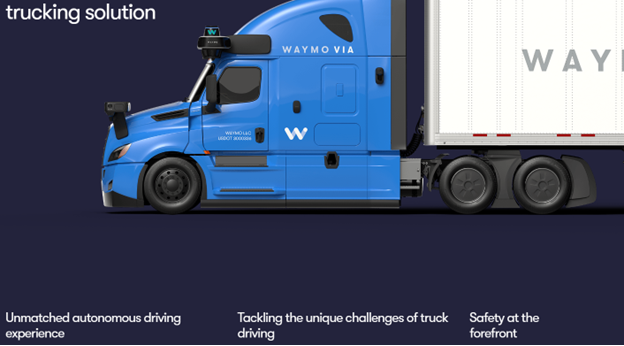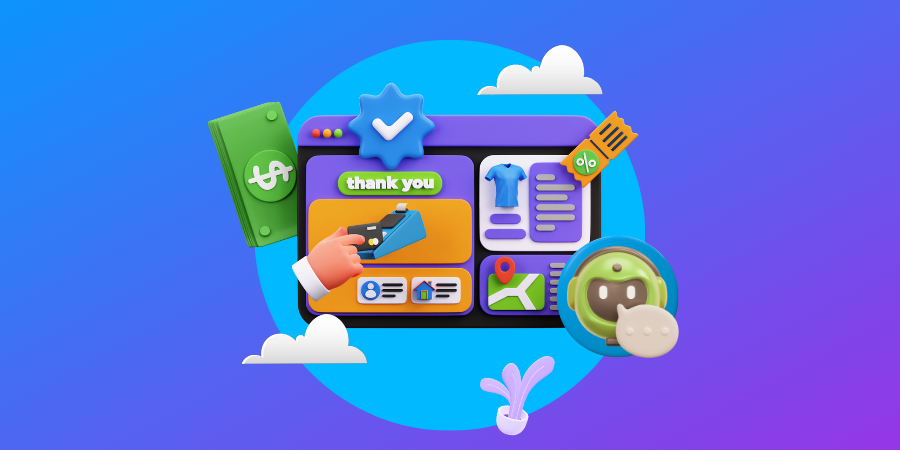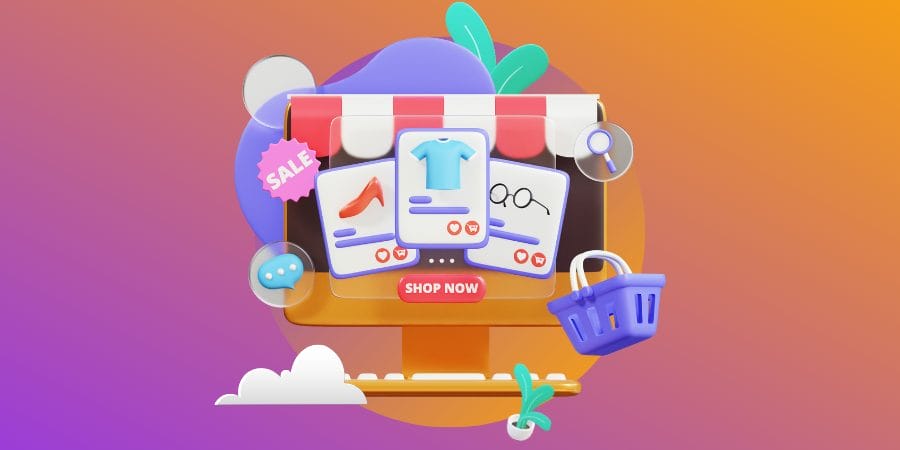The eCommerce market has tripled in size in the past five years and it’s expected that by the year 2040, 95% of purchases will be occurring online.
With this in mind, it shouldn’t come as a surprise that eCommerce technology is also rapidly evolving, bringing more streamlined and personalized shopping experiences for the 2.64 billion global customers who shop online.
From artificial intelligence (AI) to voice commerce, automated delivery and more, we’ll break down the top eCommerce trends to watch and follow in 2024.
Whether you’re aiming to get ahead or simply keep up, you won’t want to miss out on what’s trending — find out below!
[ez-toc]
Digital Silk builds custom e-stores. Request A Quote
What Is eCommerce Technology?
eCommerce technology encompasses a set of tools, platforms and software solutions that enable online businesses to operate and conduct transactions over the Internet.
This technology facilitates every step of the eCommerce journey, from product discovery to the final checkout, providing a seamless and satisfying experience for both businesses and customers alike.
10 Leading eCommerce Technology Trends For 2024
The rapidly evolving landscape of eCommerce technology is marked by key trends that are shaping the industry and driving innovation.
These eCommerce technology trends reflect the changing needs and expectations of both consumers and businesses. They are influencing the way online transactions are conducted, managed and optimized.
Let’s dive into these trends and explore some of the best examples of their implementation in the eCommerce industry.
1. Artificial Intelligence (AI) & Machine Learning (ML)
Artificial Intelligence (AI) and Machine Learning (ML) are revolutionizing the eCommerce industry by providing state-of-the-art technology solutions and automation capabilities.
AI is the development of computer systems that can perform tasks that typically require human intelligence.
It involves creating algorithms and models that enable machines to learn, reason and make decisions in a way similar to humans.
ML, on the other hand, is a subset of AI that focuses on enabling systems to learn and improve from data without explicit programming.
In eCommerce, AI and ML have revolutionized the customer journey in several ways. Examples of these technologies include:
- Chatbots and intelligent virtual assistants (IVAs): AI-powered chatbots and IVAs provide instant customer support, answering queries and assisting with purchases. These virtual assistants use natural language processing and ML algorithms to understand customer needs and provide personalized recommendations.
- AI-powered personalization: AI and ML algorithms analyze customer data to offer personalized product recommendations, tailored marketing campaigns and customized experiences. This level of personalization boosts customer engagement and drives conversions.
- Supply chain optimization: AI and ML optimize supply chain management by analyzing data on inventory levels, demand patterns and delivery routes. This allows businesses to streamline operations, reduce costs and ensure timely deliveries.
- Price optimization and dynamic pricing: AI algorithms analyze market trends, competitor pricing and customer behavior to optimize product pricing. Dynamic pricing adjusts prices in real-time based on factors like demand, availability and customer segmentation, maximizing profitability.
- Fraud detection and prevention: ML algorithms analyze transactional data to identify patterns indicative of fraudulent activities. This helps eCommerce businesses detect and prevent fraudulent transactions, protecting both businesses and customers.

[Source: Ventura Foods]
These applications of AI and ML in eCommerce demonstrate their transformative power in enhancing customer experiences, streamlining operations and driving business growth.
As technology continues to advance, the potential for AI and ML to revolutionize eCommerce further is limitless.
2. Augmented Reality (AR) & Virtual Reality (VR)
Augmented Reality (AR) and Virtual Reality (VR) are emerging as significant eCommerce technology trends, transforming the way customers interact with products and make purchase decisions.
These technologies create interactive and realistic experiences for customers, bridging the gap between online and offline shopping.
AR overlays digital information onto the real world, enhancing the shopping experience by allowing customers to visualize products in their environment.
VR, on the other hand, creates a simulated environment that users can immerse themselves in, providing a virtual shopping experience.
AR and VR technologies enable the following enhancements in eCommerce:
- Virtual try-ons: AR allows customers to virtually try on products like apparel, accessories and cosmetics. By overlaying digital representations of the products onto real-time camera images or uploaded photos, customers can see how the items would look on them before making a purchase decision. This feature reduces the likelihood of returns and increases customer satisfaction.
- Virtual showrooms: VR creates virtual environments where customers can explore and interact with products in a more immersive way. Virtual showrooms can simulate real-life shopping experiences, providing customers with a sense of presence and allowing them to examine products from different angles and perspectives.
- Interactive product visualization: AR and VR enable customers to visualize products in their intended environment. For example, furniture retailers can use AR to superimpose virtual furniture pieces onto real-life spaces, allowing customers to see how the items would fit and complement their existing decor.
- Virtual events and experiences: AR and VR technologies have been leveraged to create virtual trade shows, product launches, and interactive brand experiences. These virtual events enable businesses to reach a wider audience, provide unique engagement opportunities and overcome physical limitations.

[Source: Sephora]
3. Mobile Commerce & Progressive Web Apps (PWAs)
Mobile commerce, or m-commerce, is the buying and selling of goods and services through mobile devices such as tablets and smartphones.
With the increasing prevalence of mobile devices and their convenience, m-commerce has become a significant driver of eCommerce growth.
To cater to mobile users, businesses are adopting Progressive Web Apps (PWAs). PWAs are web applications that provide a native app-like experience on mobile devices.
They combine the flexibility of the web with the functionality and performance of native apps, offering a seamless and responsive user experience.
The advantages of Progressive Web Apps (PWAs) in mobile commerce are numerous:
- Cross-platform compatibility: PWAs are built using web technologies such as JavaScript, CSS and HTML, making them compatible with various operating systems and devices. They work seamlessly on both Android and iOS platforms, allowing businesses to reach a wider audience and reduce development costs.
- Offline functionality: One of the key advantages of PWAs is their ability to work offline or in low-connectivity environments. PWAs can cache data and content, allowing users to access and interact with the app even without a stable internet connection.
- Fast and responsive performance: PWAs are designed to load quickly and provide a smooth user experience. They are often faster than traditional mobile websites and even some native apps, leading to higher user engagement and lower bounce rates.
- App-like experience: PWAs offer an app-like experience to users without requiring them to download and install a separate application from an app store. Users can access a PWA directly through a web browser.
- Lower development and maintenance costs: Developing and maintaining separate native apps for different platforms can be costly and time-consuming. With PWAs, businesses can leverage their existing web development skills and resources to create a single application that works across platforms.
- Discoverability and shareability: Unlike native apps, which require users to visit an app store and perform a specific search, PWAs can appear in search engine results and drive traffic directly to the app. Additionally, PWAs can be shared via URLs, allowing users to easily share product links or refer others to the app.

[Source: Starbucks]
4. Voice Commerce
Voice commerce, also known as v-commerce, is a growing eCommerce technology trend that leverages voice assistants and smart devices to enable customers to make purchases using voice commands.
With the rise of virtual assistants like Amazon’s Alexa, Apple’s Siri, Google Assistant and Microsoft’s Cortana, voice commerce has gained significant traction and is transforming the way customers interact with brands and make online purchases.
Voice commerce is gaining traction primarily because it offers a more convenient and user-friendly shopping experience.
By leveraging voice commands, users can interact with online platforms in a seamless and intuitive manner.
The hands-free operation of voice commerce enables users to perform tasks and make purchases without the need for manual input, making it particularly appealing in various situations.
What’s more, voice commerce promotes accessibility and inclusivity, opening up eCommerce to individuals with disabilities or those who may face challenges with traditional interfaces.

[Source: Domino’s]
5. Live-Stream Commerce
Live-stream commerce is a growing trend in eCommerce where businesses utilize live-streaming platforms to showcase and sell products in real-time.
It combines elements of entertainment, social interaction and shopping, creating an engaging and interactive shopping experience for customers.
Unlike static product images or pre-recorded videos, live streams enable viewers to see the products in action, observe their features and functionalities and gain a better understanding of their quality.
This real-time demonstration builds trust and confidence in the products, leading to higher conversion rates and customer satisfaction.
Customers can actively participate in the live stream by asking questions, seeking clarifications and receiving immediate responses.
This level of interaction replicates the personalized assistance one would receive in a physical store, enhancing the overall shopping experience.
One of the driving factors behind the popularity of live-stream commerce is the element of exclusivity and limited-time promotions.
Businesses often offer special discounts, bundle deals or exclusive products during live-stream sessions, creating a sense of urgency and excitement among viewers.
This creates a favorable environment for impulse purchases and encourages customers to take immediate action, knowing that they might miss out on the opportunity if they hesitate.
6. Multiple Payment & Collection Options
Different payment and collection options play a crucial role in enhancing the convenience and flexibility of eCommerce transactions.
Providing a variety of payment methods and collection options gives customers more freedom and control over their shopping experience.
Popular payment methods in eCommerce include:
- Credit and debit cards: This remains the most widely used payment method, allowing customers to make purchases using their Visa, Mastercard, American Express or other major credit and debit cards.
- Bank transfers: Some customers prefer to make direct payments from their bank accounts through bank transfer options. This method requires customers to authorize the transfer of funds from their bank to the merchant’s account.
- Digital wallets: Digital wallet services like PayPal, Apple Pay, Google Pay and Amazon Pay provide a convenient and secure way for customers to store their payment information and make quick online purchases.
- Cryptocurrencies: With the rise of cryptocurrencies like Bitcoin, Ethereum and Litecoin, some eCommerce platforms accept digital currencies as a form of payment. Cryptocurrency transactions offer decentralization, security and privacy.
- Buy Now, Pay Later (BNPL): BNPL services, such as Klarna, Afterpay and Affirm, allow customers to split their purchase amount into installments, making it more affordable and flexible for them to make larger purchases.
- Prepaid cards: Prepaid cards or virtual gift cards offer a convenient way for customers to make online purchases without using their personal credit or debit cards. These cards are preloaded with a specific amount and can be used for transactions until the balance is exhausted.

[Source: Google]
In addition to payment options, providing multiple collection options is equally important. Home delivery is a widely preferred choice, especially for larger items or customers who value convenience.
In-store pickup options give customers the flexibility to collect their purchases at their preferred time and location, reducing delivery wait times.
Locker pickup services have also gained popularity, providing secure and convenient collection points for packages.
Meet our award-winning designers. Set Up A Consultation
7. Enterprise Resource Planning Solutions (ERP)
Enterprise Resource Planning (ERP) solutions are comprehensive software systems that integrate various business processes and functions into a single, unified platform.
In the context of eCommerce, ERP solutions play a vital role in streamlining operations, improving efficiency and enhancing overall business performance.
Examples of popular ERPs include Oracle, Microsoft Dynamics 365 and NetSuite.
Key benefits of implementing ERP solutions in eCommerce include:
- Centralized data management: ERP systems provide a centralized database that consolidates data from various departments and functions, such as inventory management, order processing, customer relationship management and financials. This centralized approach ensures data accuracy, avoids duplicate data entry and allows for real-time access to critical information.
- Efficient inventory management: ERP solutions enable businesses to optimize their inventory management by automating processes such as stock monitoring, order fulfillment and demand forecasting. With accurate inventory data and real-time insights, businesses can minimize stockouts, reduce carrying costs and improve order fulfillment rates.
- Streamlined order processing: ERP systems streamline the entire order processing workflow, from order placement to delivery. Orders can be efficiently processed, tracked and fulfilled, ensuring timely deliveries and improving customer satisfaction.
- Integrated customer relationship management: By integrating CRM functionality, ERP solutions enable businesses to manage customer interactions, track sales leads and provide personalized customer experiences. This integration helps businesses build strong customer relationships, enhance customer loyalty and drive repeat purchases.
- Financial management and reporting: ERP systems incorporate robust financial management modules that handle tasks such as accounts payable and receivable, invoicing and financial reporting. This integration ensures accurate financial data, enables timely financial analysis and facilitates informed decision-making.
- Scalability and growth: ERP solutions are designed to accommodate the growth of eCommerce businesses. They can scale to handle increasing transaction volumes, expand product catalogs and support multi-channel sales strategies.
8. Warehouse & Delivery Automation Technologies
Warehouse and delivery automation technologies are revolutionizing the eCommerce industry by streamlining logistics processes, reducing costs and improving overall efficiency.
These technologies leverage automation, robotics and advanced data analytics to optimize inventory management, order fulfillment and last-mile delivery.
Here are some notable examples of trending warehouse and delivery automation technologies:
Internet of Things (IoT): The Internet of Things refers to the network of interconnected physical devices embedded with sensors, software and connectivity that enables them to collect and exchange data.
In the context of warehouse and delivery automation, IoT plays a crucial role in optimizing operations and enhancing efficiency.
Example: Amazon harnesses the power of IoT devices like smart shelves, robots and sensors to keep a close eye on inventory levels, track shipments and optimize the picking and packing process.
These interconnected devices maintain constant communication with each other and the central system, enabling the retrieval of real-time data and valuable insights for enhanced decision-making.
Intelligent automation: Intelligent automation combines artificial intelligence (AI) and robotic process automation (RPA) to automate repetitive and rule-based tasks.
It involves the use of AI algorithms and machine learning to enable systems to learn, adapt and make decisions autonomously.
Example: Ocado, a UK-based online grocery retailer, employs intelligent automation in its highly automated warehouses.
They use AI-powered robots that navigate the warehouse, pick products from shelves and prepare orders for delivery. The system learns from past orders, optimizing the picking routes and improving efficiency over time.
Cobots: Cobots, short for collaborative robots, are robots designed to work alongside humans in a collaborative manner.
They are equipped with sensors and advanced safety features that allow them to interact and collaborate with human workers without causing harm.
Example: BMW has integrated cobots into their manufacturing processes to enhance productivity and efficiency. These cobots work alongside human workers, assisting with repetitive or physically demanding tasks.
They are equipped with sensors and advanced safety features that enable them to operate safely in close proximity to humans.

[Source: BMW Group]
Autonomous delivery vehicles: Autonomous delivery vehicles are self-driving vehicles used for the transportation of goods.
These can be drones, ground robots, trucks and vans and boats and ships. They leverage technologies such as computer vision, sensors and GPS to navigate and operate without human intervention.
Example: Waymo, a subsidiary of Alphabet Inc. (Google’s parent company), is developing autonomous delivery vehicles for last-mile logistics.
These vehicles are equipped with advanced sensors and AI systems to safely navigate roads, deliver packages and optimize delivery routes, improving efficiency and reducing delivery costs.

[Source: Waymo]
Automated returns management systems: Automated returns management systems streamline and automate the process of handling product returns.
These systems utilize technologies such as barcode scanning, RFID and AI algorithms to efficiently process returns, manage inventory and provide real-time visibility into return statuses.
Example: Optoro, a technology company specializing in returns management, offers an automated returns platform.
Their system uses AI algorithms to determine the optimal disposition of returned products, whether it’s restocking, reselling, refurbishing or liquidation.
This automated process helps reduce the time and costs associated with returns while maximizing recovery value.
9. eCommerce Security Technology
eCommerce security technology encompasses a range of tools, protocols and practices designed to safeguard online businesses and their customers from malicious activities.
These technologies play a critical role in maintaining the trust and confidence of consumers, ensuring the integrity of transactions and protecting sensitive information.
New eCommerce technology trends businesses should consider implementing to improve security include:
- Biometric authentication: Biometric authentication involves using unique biological characteristics, such as fingerprints, facial recognition, iris scans or voice recognition, to verify the identity of an individual. It is a highly secure and convenient method of authentication, as these characteristics are difficult to forge or replicate.
- Blockchain: Blockchain is a decentralized and distributed ledger technology that allows for safe and transparent transactions. It ensures the integrity and immutability of data by creating a chain of blocks, each containing a set of transactions. In the context of eCommerce, blockchain can be used to secure and streamline transactions, verify the authenticity of products and enhance supply chain transparency.
- Cloud-based security solutions: Cloud-based solutions offer scalable, cost-effective and easily accessible security features for eCommerce businesses. Cloud-based security can include services such as web application firewalls (WAFs), distributed denial-of-service (DDoS) protection, threat intelligence and data encryption.
- Artificial Intelligence (AI) and Machine Learning (ML): AI and ML technologies are being used in eCommerce security to detect patterns, anomalies and potential threats. These technologies can analyze large volumes of data in real-time, identify fraudulent activities and provide proactive security measures.
- Tokenization: Tokenization is a process that replaces sensitive data, such as credit card numbers, with unique tokens. These tokens are used for transactions instead of sensitive data, reducing the risk of data exposure. Even if a token is intercepted, it cannot be used to retrieve the original sensitive information.
10. Sustainability & Green Technologies
The momentum of green commerce is undeniable, as consumers place an emphasis on sustainability even in uncertain financial times.
The pandemic has further raised the value placed on environmental consciousness, with over half of consumers expressing increased appreciation for sustainability.
Platforms like Patagonia, EarthHero, Grove Collaborative and Allbirds emerged as market leaders in the eco-conscious eCommerce arena, enthralling customers with their true commitment to sustainability.
Patagonia sets the standard for responsible fashion, EarthHero develops zero-waste products, Grove Collaborative produces non-toxic home essentials in sustainable packaging and Allbirds sells eco-friendly footwear.
In the future, the trend towards greener practices will continue to grow, with brands taking different initiatives such as:
- Offering products made from more sustainable materials
- Embracing renewable energy sources
- Providing users with choices for sustainable shipping options, like shipping all items together in one package
- Investing in environmentally-friendly packaging materials
- Making recycling easy and promoting the purchase of pre-owned items directly from their websites
By adopting such sustainable initiatives, eCommerce businesses may appeal to environmentally-conscious consumers while also positioning themselves as responsible and forward-thinking brands.
How To Choose The Right eCommerce Tech Trends For Your Brand
When choosing the right eCommerce technology trends for your brand, the main factors to consider are your niche and your audience.
While many technologies have the potential to enhance eCommerce operations, their value and relevance may vary depending on the nature of your business.
Let’s explore some key eCommerce technology trends and the industries they can benefit the most:
1. Artificial Intelligence (AI) & Machine Learning (ML)
- Retail: AI and ML can be used to personalize product recommendations, optimize pricing strategies and improve customer service through chatbots and virtual assistants.
- Logistics: AI and ML algorithms can optimize inventory management, demand forecasting and route optimization for efficient logistics operations.
- Healthcare: AI-powered chatbots can assist with patient inquiries and appointment scheduling, while ML algorithms can analyze medical data for diagnostics and treatment recommendations.
2. Augmented Reality (AR) & Virtual Reality (VR)
- Fashion and Apparel: AR and VR can enable virtual fitting rooms, allowing customers to try on clothing virtually before making a purchase.
- Home Decor and Furniture: AR can help customers visualize how furniture or decor items would look in their homes before buying, enhancing the online shopping experience.
- Travel and Tourism: VR can provide virtual tours of destinations, hotels and attractions, allowing travelers to make more informed decisions.
3. Voice Commerce
- Consumer Electronics: Voice assistants can be integrated with smart home devices, enabling customers to make purchases or control their electronics using voice commands.
- Grocery and Food Delivery: Voice commerce can simplify the process of adding items to a shopping list or placing food delivery orders, enhancing convenience for customers.
4. Mobile Commerce
- Food and Beverage: Mobile apps can facilitate quick and convenient food ordering and delivery, catering to the growing demand for on-the-go dining experiences.
- Fashion and Beauty: Mobile commerce allows customers to browse and purchase products directly from their smartphones, offering a seamless and personalized shopping experience.
5. Live Stream Commerce
- Various industries: Real-time product demonstrations, interactive engagement, and influencer collaborations.
Digital Silk is a full-service web design agency specializing in web design, web development and digital marketing services.
By partnering with us, you can leverage our team’s expertise and experience to elevate your online presence and drive your online growth.
We’ll help you navigate the vast array of eCommerce technology trends, ensuring that you adopt the right strategies for your brand and target audience.
Whether you’re a small startup or an established enterprise, our goal is to empower your business with the tools and insights needed to achieve success in the digital realm.
Top 4 Platforms For eCommerce Tech Trends
With a multitude of options available, it can be challenging to determine which platform aligns best with your business goals. At Digital Silk, we have extensive experience working with
various eCommerce platforms, and we have narrowed down the top four that consistently deliver exceptional results for businesses of all sizes.
1. Adobe Commerce (Magento)
Adobe Commerce, formerly known as Magento, is a highly customizable and feature-rich platform widely regarded as one of the industry’s powerhouses.
It offers an array of robust tools and functionalities, making it an excellent choice for businesses with complex eCommerce requirements.
With a scalable architecture, advanced SEO capabilities and extensive integration options, Adobe Commerce empowers businesses to create personalized shopping experiences for their customers.
2. Shopify
Known for its simplicity and versatility, Shopify is a leading eCommerce platform that powers over a million online stores.
Having started your own Shopify store, you’ll gain access to the wide range of themes, plugins and apps which allow businesses to create customized and visually appealing online stores.
Shopify also provides secure payment gateways, inventory management tools and marketing features to help businesses drive sales and grow their online presence.
3. BigCommerce
BigCommerce is another robust eCommerce platform known for its scalability and comprehensive features. It caters to businesses of all sizes, from small startups to enterprise-level organizations.
This platform offers a wide range of customizable templates, intuitive content management tools and powerful SEO capabilities.
Moreover, it provides seamless integration with various popular third-party applications, giving businesses the flexibility to extend their store’s functionality.
4. WooCommerce
Built as an extension to WordPress, WooCommerce is a popular choice for businesses looking for a flexible and scalable eCommerce solution.
It integrates seamlessly with WordPress websites, providing a familiar interface for managing products, orders and customer data.
WooCommerce offers a vast selection of themes and plugins, allowing businesses to create highly customized online stores. It also provides extensive payment options and robust inventory management features.
Tap Into eCommerce Technology Trends With Digital Silk
Digital Silk is a full-service agency that combines creativity, technology and strategy to deliver exceptional eCommerce solutions.
Our in-house team is comprised of top web designers, developers, branding and marketing experts, copywriters and more.
We focus on providing value by developing custom eCommerce solutions that deliver seamless user experiences and drive conversions.
We combine innovative design, advanced eCommerce technology and data-driven strategies to help businesses achieve their eCommerce objectives.
Our team takes the time to understand your brand identity, target audience and business objectives, ensuring that every aspect of your online store is aligned with your unique brand proposition and designed to connect with your target market.
If you’re ready to implement some of the leading eCommerce tech trends into your online store, schedule a consultation with our team.
"*" indicates required fields








